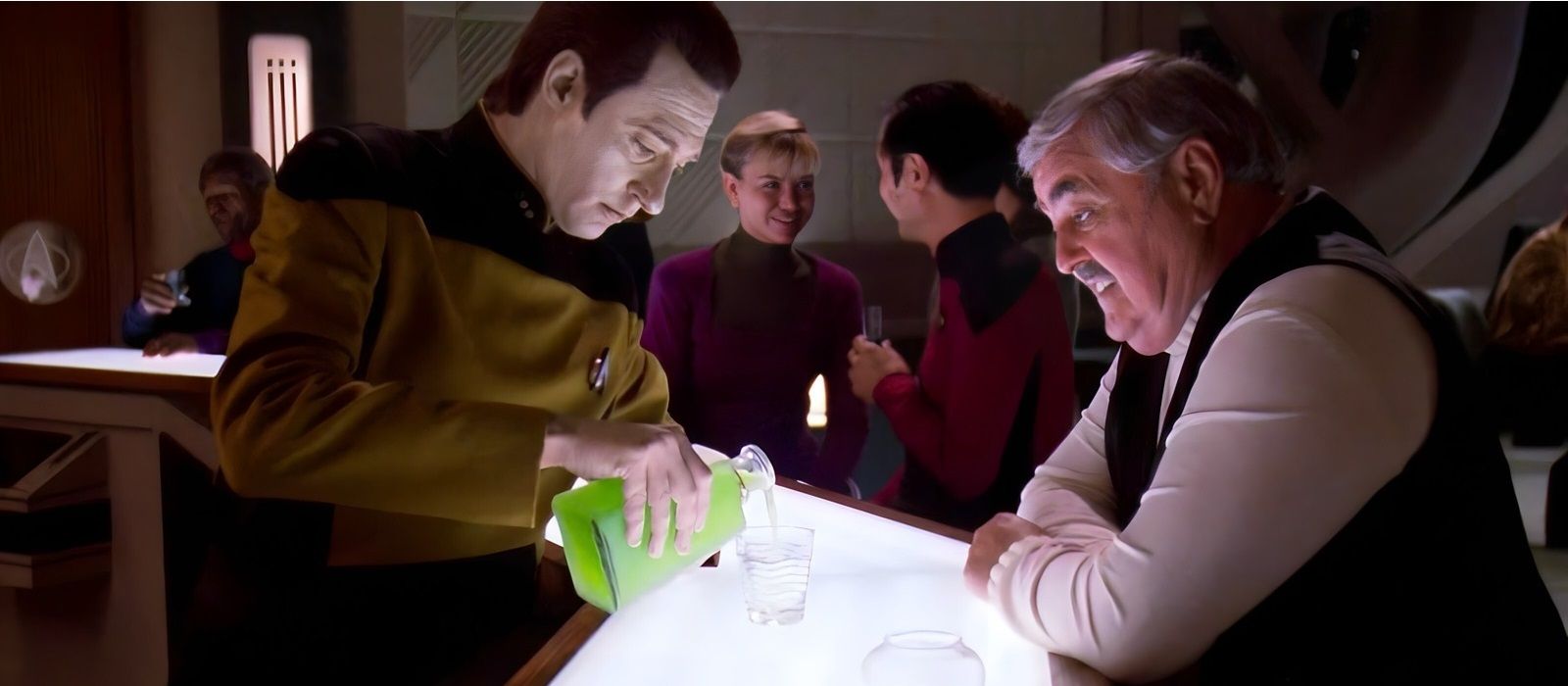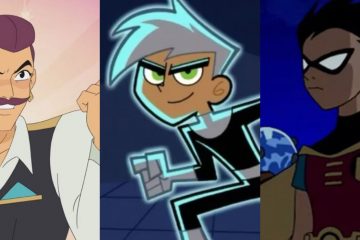The original Star Trek series was an anomaly on television in the late 1960s, both for its inclusivity and the way it excluded a common vice of the day. By the time the franchise returned for Star Trek: The Next Generation, Gene Roddenberry’s fictional view of humanity continued to evolve and improve, often in ways he himself couldn’t. Perhaps this is why, starting with The Next Generation, the characters no longer drank alcohol but instead drank something called synthehol. What exactly is this sci-fi booze and how it works are ill-defined, at best.Conceptually, synthehol is easy to understand. Rather than drinking real alcohol, Starfleet officers can drink this new substance which balances the pleasurable effects of getting a buzz on. However, in case of the odd all-hands Red Alert, synthehol does not have the deleterious effects real alcohol has. In the 1960s, the single biggest advertisers at the time were tobacco companies. The regulation of advertising the addictive, cancer-causing vice was still in its infancy. Despite this (and being a smoker himself), Gene Roddenberry forbade the use of tobacco among Starfleet officers. By virtue of running for 15 years longer than Star Trek: The Original Series, the second-wave of Star Trek featured significantly more time spent drinking among the crew. However, thanks to synthehol, the heroes of The Next Generation, Star Trek: Deep Space Nine and Star Trek: Voyager never had to worry about being too hammered for duty.In the mid-20th century, cultural values in the United States were quite different than even in the late 1980s when Star Trek came back to TV. In the first, failed pilot for Star Trek, one of the first scenes features Captain Pike and Dr. Boyce sharing martinis in the former’s quarters. Boyce offers the drink saying the captain can tell his “bartender” things he might keep from the ship’s Chief Medical Officer.Which Star Trek Captains Capture the Spirit of Jim Kirk and William Shatner?
The original Star Trek series was an anomaly on television in the late 1960s, both for its inclusivity and the way it excluded a common vice of the day. By the time the franchise returned for Star Trek: The Next Generation, Gene Roddenberry’s fictional view of humanity continued to evolve and improve, often in ways he himself couldn’t. Perhaps this is why, starting with The Next Generation, the characters no longer drank alcohol but instead drank something called synthehol. What exactly is this sci-fi booze and how it works are ill-defined, at best.
Conceptually, synthehol is easy to understand. Rather than drinking real alcohol, Starfleet officers can drink this new substance which balances the pleasurable effects of getting a buzz on. However, in case of the odd all-hands Red Alert, synthehol does not have the deleterious effects real alcohol has. In the 1960s, the single biggest advertisers at the time were tobacco companies. The regulation of advertising the addictive, cancer-causing vice was still in its infancy. Despite this (and being a smoker himself), Gene Roddenberry forbade the use of tobacco among Starfleet officers. By virtue of running for 15 years longer than Star Trek: The Original Series, the second-wave of Star Trek featured significantly more time spent drinking among the crew. However, thanks to synthehol, the heroes of The Next Generation, Star Trek: Deep Space Nine and Star Trek: Voyager never had to worry about being too hammered for duty.
In the mid-20th century, cultural values in the United States were quite different than even in the late 1980s when Star Trek came back to TV. In the first, failed pilot for Star Trek, one of the first scenes features Captain Pike and Dr. Boyce sharing martinis in the former’s quarters. Boyce offers the drink saying the captain can tell his “bartender” things he might keep from the ship’s Chief Medical Officer.
#Synthehol #Star #Treks #SciFi #Alcohol #Explained
Note:- (Not all news on the site expresses the point of view of the site, but we transmit this news automatically and translate it through programmatic technology on the site and not from a human editor. The content is auto-generated from a syndicated feed.))



